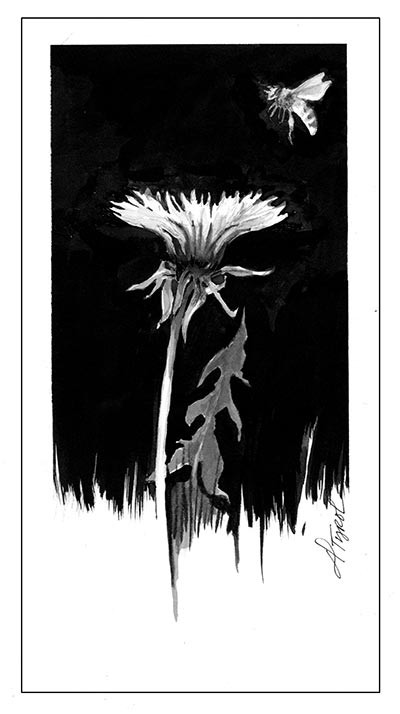
Imagine you had a power that allowed you to pick up nearby objects without actually touching them. Imagine this power could help you find and choose the best foods while shopping. Imagine you could use this power to communicate with your family. Bees have just such a power. It's called electroreception, and it gives them the ability to perceive and respond to electrical fields.
Scientists have known since at least the 1970s that flying bees can pick up electrostatic charges as they move, but they didn’t know whether these charges had any practical value. Today, some suspect that electrostatic charge may be very useful to bees.
The charge a bee picks up while walking and flying is always positive. It’s caused as air molecules collide with the bee and knock electrons away from the surface of its body. Plants, on the other hand, are negatively charged by their connection to the ground. So what happens when a positively charged bee carrying a couple of hundred volts meets a negatively charged flower? The flower's pollen grains can jump from the flower and stick to the bee's body.
Are bees sensing and deliberately using the electrical charges as they forage? The answer appears to be yes. Scientists at the University of Bristol set up an experiment to test the bees' ability to sense and use floral electrical fields to make foraging choices. Bees had the option of visiting mock flowers with a slight charge of 30 volts that provide a sugar reward, or identical but uncharged mock flowers that have a bitter quinine solution that bees don't like. By the end of 50 trials, the bees chose the charged sugar flowers about 80 percent of the time, a much better success rate than if they were choosing flowers at random. When the sugar flowers' charge was turned off, the bees visited the sugar flowers only half the time, indicating that they could no longer tell sugar flowers from bitter ones.
Bees may have yet another way in which they use electrostatic charges: communicating with each other. When a bee returns to its hive after a successful foraging trip, it performs a "waggle dance" to communicate the location of its foraging success. It is possible that hivemates interpret this dance not just through visual cues but by sensing the electrical field pattern that is created. Flying bees don't lose all their charge when they land and become grounded, because their legs aren't very good conductors, so they continue to carry a charge that other bees can sense. As the incoming bees dance, they create a specific electrical field pattern made up of pulses of hundreds of volts. Recent experiments suggest that bees may be using their antennae to detect these electrical patterns.
Although much about how bees' electroreception sense works is still a mystery, what is clear is that bees have a more sophisticated way of sensing and interacting with the world than we had previously imagined.


Discussion *